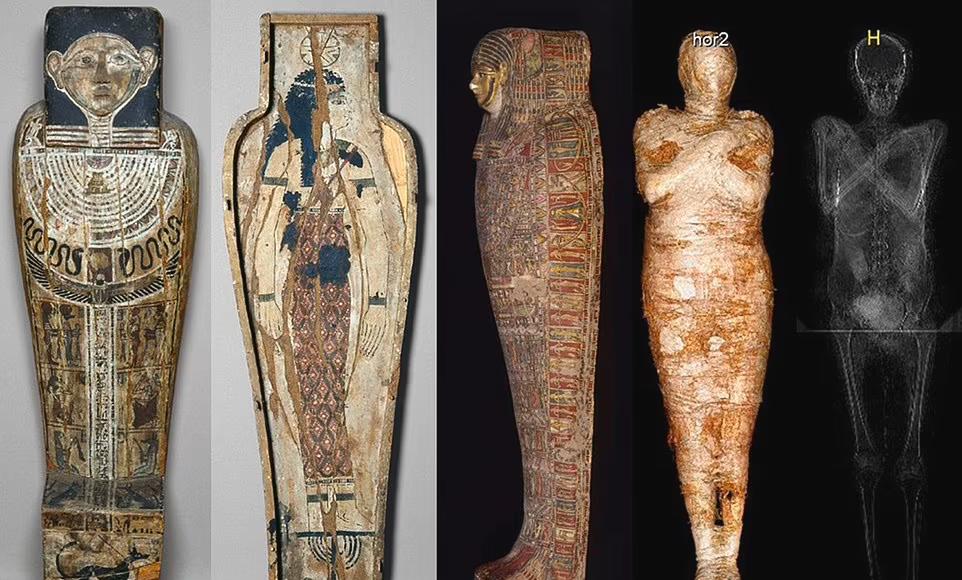According to a paper published in the latest issue of the Journal of Archaeological Science, a team led by the University of Warsaw in Poland found that an Egyptian mummy more than 2,000 years ago had a fetus preserved in its belly, which was "pickled" like an egg by an acidic liquid when the mother rotted. It is reported that this is the only known Egyptian pregnant mummy.

The location of the mummy of the mysterious lady is unknown, and it is uncertain whether it is Thebes in the south or Giza in the north.
Dr. Marzena O arek-Szilke, an archaeologist and paleontologist at the University of Warsaw in Poland, and colleagues reportedly used a combination of CT and X-ray scans to find the remains of the unborn child as early as April 2021.
The mummy, believed to be the first known embalmed specimen containing a fetus, was brought out of Egypt by Jan W yk–Rudzki, who donated the specimen to the University of Warsaw in December 1826.
Scans found fetuses in the mummified abdomen.
To date, experts are unsure who the "mysterious lady" really was and what caused her to die in her 20s in the 1st century BC.
Even the location of her tomb has been forgotten, with some records suggesting she was found in the "Royal Mausoleum of Thebes", while others say it was found in the Pyramid of Cheps in Giza.
What the researchers were able to determine was that, depending on the location of the fetus and how the birth canal was closed, the mysterious woman did not die in childbirth.
Previous studies suggested that when the mummy died, she was 28 weeks pregnant.
The fetus is "pickled" in the acidic environment of the mother's womb and is well preserved.
Dr. Marzena's research team said that the fetus is "pickled" in the womb, the pH of the corpse's blood drops significantly and becomes more acidic, the concentration of ammonia and formic acid increases over time, and the fetus is in an environment comparable to the swamp environment in which ancient corpses are preserved.
Since the acidification of the mysterious lady's body during the decomposition process will deminerate the bones of the fetus, it makes it difficult for the fetus to be found in the first place.
"Imagine putting an egg in a jar filled with acid, and the eggshell dissolves, leaving only the egg whites and yolks, as well as the minerals dissolved in the acid in the eggshell," the team said. ”
Due to long-term immersion in an acidic environment, the bones of the fetus have dissolved
In mummies, the team explains, minerals leached from fetal bones are deposited into the fetal tissue and the surrounding uterus, giving the two a higher radiation density, giving them a different appearance on CT scans.
With the completion of preliminary studies on the mummy and her unborn child, researchers are now working to determine why her preservatives left the fetus in the womb, as the woman's internal organs were removed during the mummy making process.